Affiliate links on Android Authority may earn us a commission. Learn more.
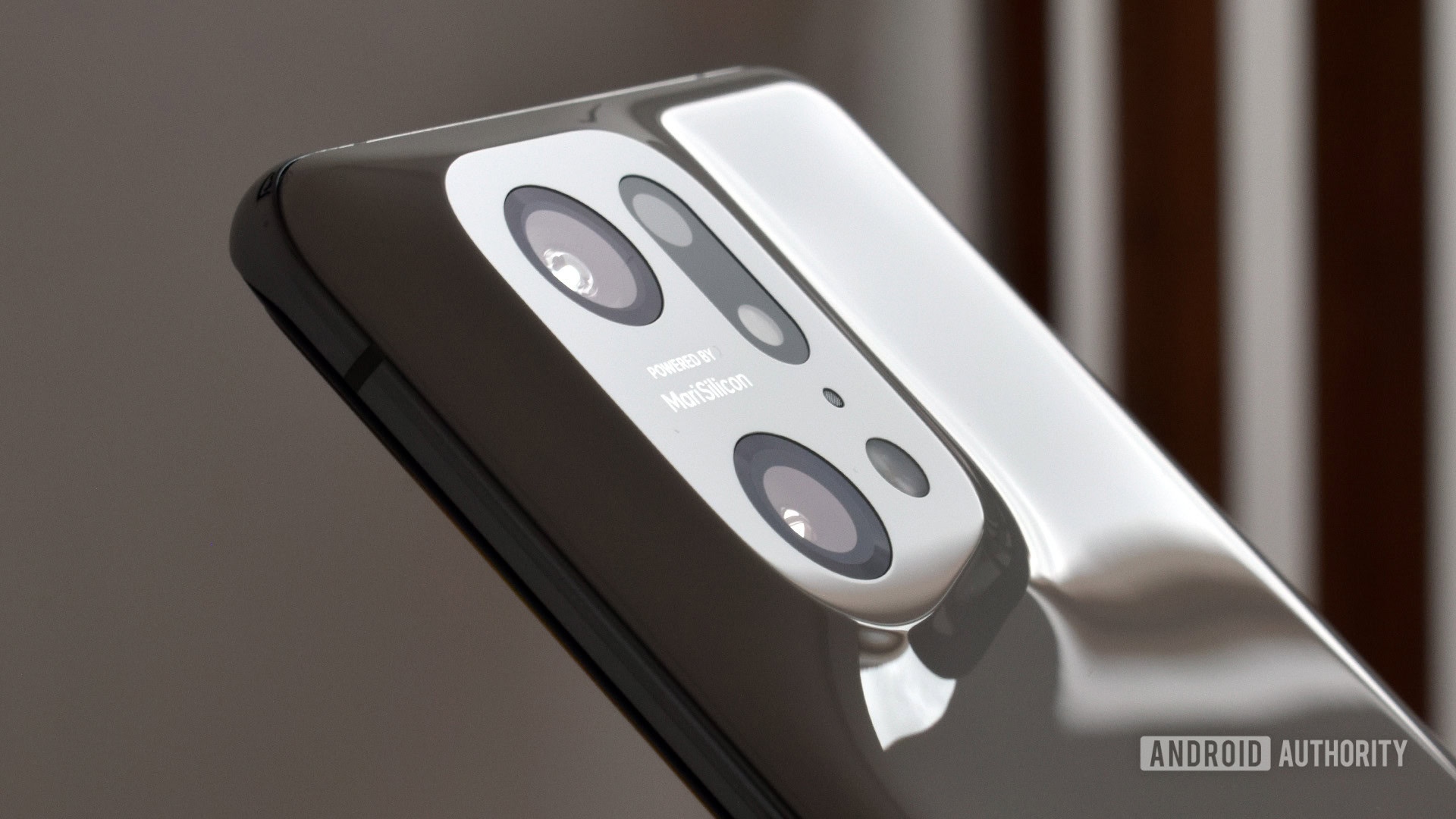


Oppo Find X5 Pro
MSRP:
What we like
What we don't like
Our scores

Oppo Find X5 Pro
The Find X5 Pro embodies the best mobile technology that OPPO had to offer in 2022 (outside of its China-only Find N2 foldable, at least). Sporting a futuristic aesthetic, an updated version of the company’s Color OS software, and a powerful new camera setup, OPPO is building on the core principles of the Find series’ DNA and looking to snag some air time from the other biggest names in the business. But does the latest OPPO flagship do enough to stand out from its predecessor — the Find X3 Pro — and the best Android phones? Find out in Android Authority’s OPPO Find X5 Pro review.
Update, March 2023: Added more details about competitors, pricing, and software.
What you need to know about the OPPO Find X5 Pro
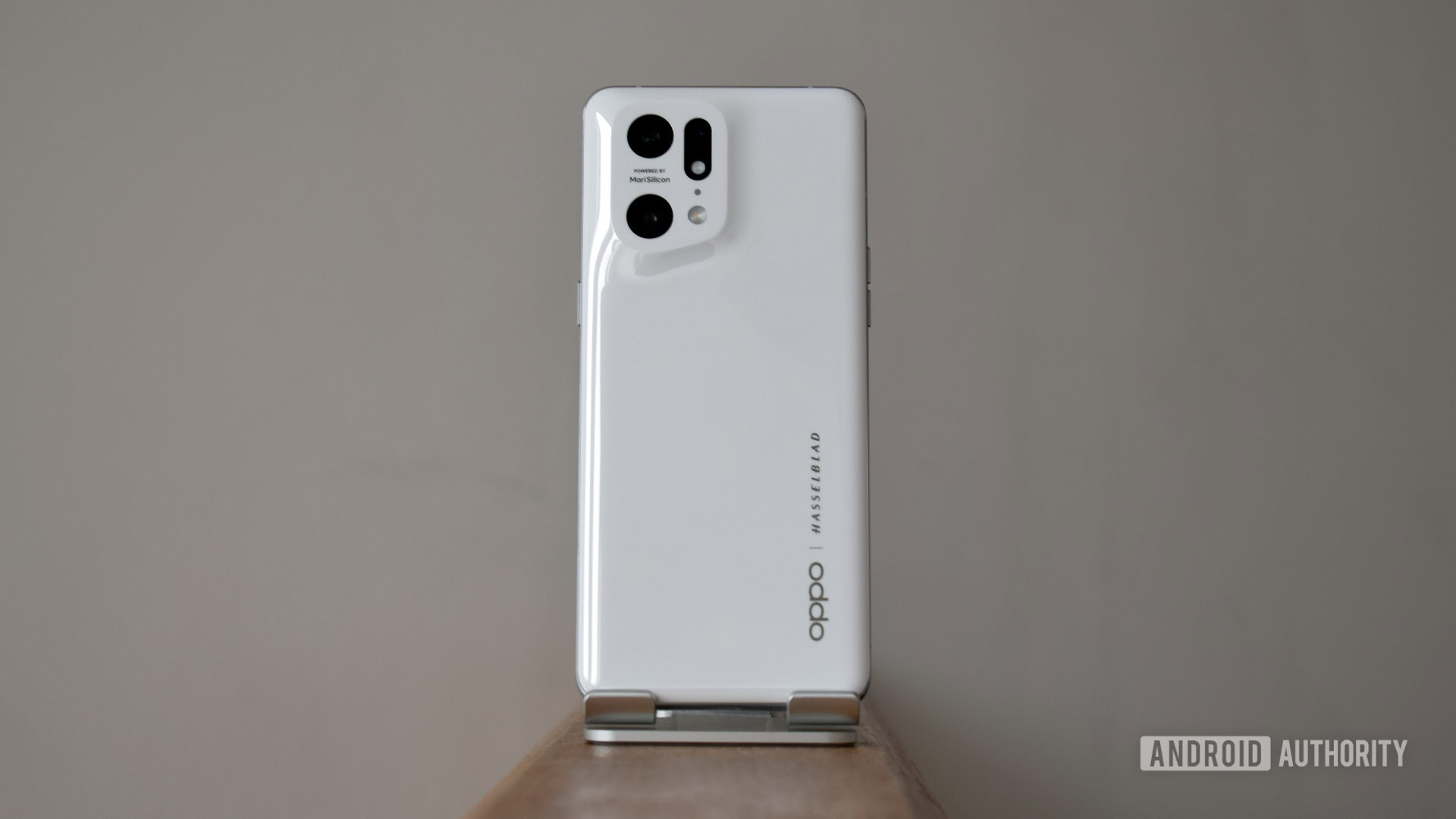
- OPPO Find X5 Pro (12GB/256GB): £799 / €949 (was £1,049 / €1,299)
The OPPO Find X5 Pro is very much a follow-up to 2021’s Find X3 Pro flagship, both in terms of aesthetics and hardware features. That’s right, OPPO skipped over the X4 moniker, as it’s considered an unlucky number in China. The Find X5 Pro showcases OPPO’s best-in-class features, including its 80W SuperVOOC fast wired and 50W wireless charging technology, high-end performance, and powerful ColorOS 12 software (now upgraded to ColorOS 13.). There’s also a more affordable OPPO Find X5 model in the series, boasting a similar design but with a few small compromises to the hardware package.
OPPO positions the Find X5 Pro as a photography powerhouse. In addition to a triple camera setup, the phone debuts OPPO’s in-house Marisilicon X image signal processor to bring more powerful AI photo processing smarts to the handset. Like its sister brand OnePlus, OPPO partnered with Hasselblad for picture color processing. OPPO really wants you to know that it cares about photography — you can’t escape that fact based on the branding plastered over the phone.
The Find X5 Pro comes in Ceramic White (pictured) and Glaze Black color options. There’s just a single memory configuration, offering 12GB of RAM and 256GB of internal storage, with no microSD slot to expand the available memory. OPPO includes an 80W SuperVOOC charger, a USB-A to USB-C cable, and a plastic protective case in the box.
OPPO sells the Find X5 Pro in the UK and across Europe. It won’t be making its way to the US in an official capacity. However, OPPO notes that the phone now supports the n13, n18, and n25 5G bands that are popular with North American carriers. That means the Find X5 Pro will play nicer with some networks than its processor when roaming or if imported. The handset also sports dual 5G SIM slots and eSIM capabilities.
Design: Back to the future
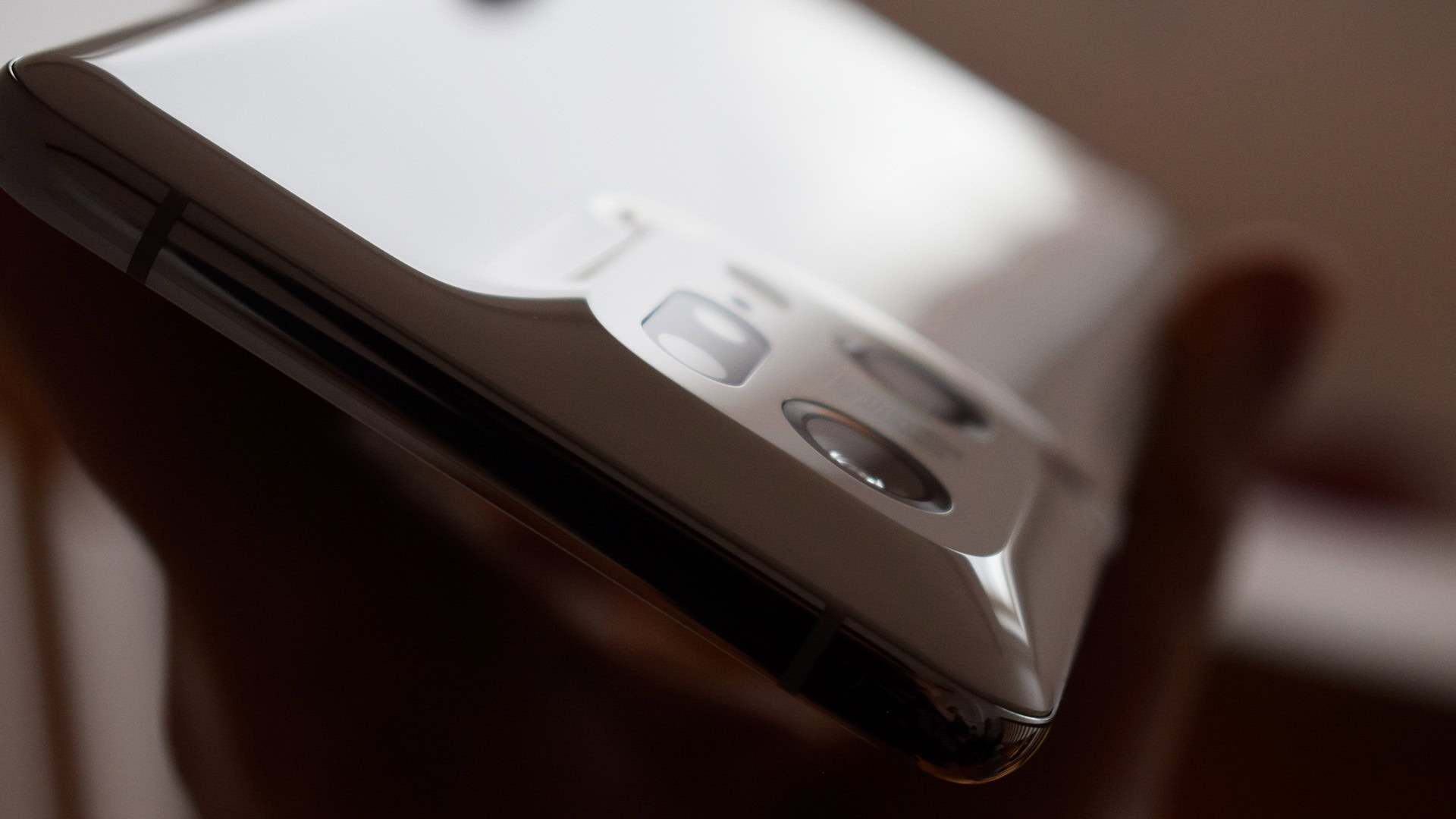
- Microcrystalline ceramic, Gorilla Glass Victus
- 163.7 x 73.9 x 8.5mm
- 218g
- In-display fingerprint reader
- IP68 rating
- Stereo speakers
- Ceramic White and Glaze Black
2021’s unibody design split the crowd and the more asymmetrical look of the OPPO Find X5 Pro is sure to do the same. Built from a nanometer microcrystalline ceramic that OPPO boasts takes over 168 hours to construct, the series’ now iconic curved unibody has been slightly reshaped this year to accommodate a tweaked camera housing. I can best describe it as a mashup between sports car aerodynamics and a slight sci-fi vibe, but however you label it, the OPPO Find X5 Pro looks great to my eye. I’m less sold on the Hasselblad and Marisilicon branding though — it’s a bit much and somewhat spoils the clean, futuristic aesthetic.
Fortunately, the ceramic material is nowhere near the fingerprint magnet of Find X3 Pro’s glass design. However, you will still notice the odd streak and smear. There’s a decent level of grip to it, unlike glass phones, and OPPO claims the ceramic coating is strengthened and scratch-resistant. It certainly feels sturdy. You’ll find Corning Gorilla Glass Victus protection on the front and the whole package is wrapped up in an IP68 rating for water and dust resistance. The bottom line — the Find X5 Pro is a very nicely built smartphone.
The OPPO Find X5 Pro's futuristic design is backed up by cutting-edge hardware.
OPPO flanks its ceramic and glass build with an aluminum frame. A power button is located on the right and two slightly small volume buttons on the left. Along with a USB-C port on the bottom, of course, which sits next to a speaker grille. The microphone port located right next to the dual-SIM tray extractor feels like a recipe for disaster, though.
While we’re on the subject of speakers, they are boosted by Dolby’s Atmos technology, which is increasingly common at this price. The sound is as decent as you’ll find from any rival mobile setup and there’s a reasonable balance between the top and bottom speakers that’s better than most. As usual, the bottom port produces most of the bass and volume, but the balance is good enough that accidentally covering a port doesn’t completely ruin the sound. Even so, bottom-facing ports aren’t great for gamers who will end up holding their phone landscape. The Find X5 Pro is also outfitted with all the essential Bluetooth audio codecs, with support for LDAC, LHDC, and Qualcomm’s aptX suite.
OPPO provides a familiar suite of security options, including pattern, PIN, and face unlock. We wouldn’t recommend the latter, as it’s simply based on the selfie camera rather than more secure facial depth-mapping capabilities. Fortunately, the in-display fingerprint scanner is ultra-snappy and responsive. Setup is a breeze and the Find X5 Pro unlocks via the finger in a split second. I’ve barely had a single mismatch in a week of use, which is exactly what you want in a top-notch fingerprint scanner.
If there’s one complaint I have about the OPPO Find X5 Pro’s design (aside from those pesky logos) is that there aren’t enough options. As great as the phone looks, black and white colorways are a little dull compared to some of its competitors. Yes, you’ll probably throw a case on it anyway, but a custom color or textured finish is a nice way to personalize an expensive purchase like this. Can you tell I still miss the Find X2 Pro’s leather?
Display: Obest in the business
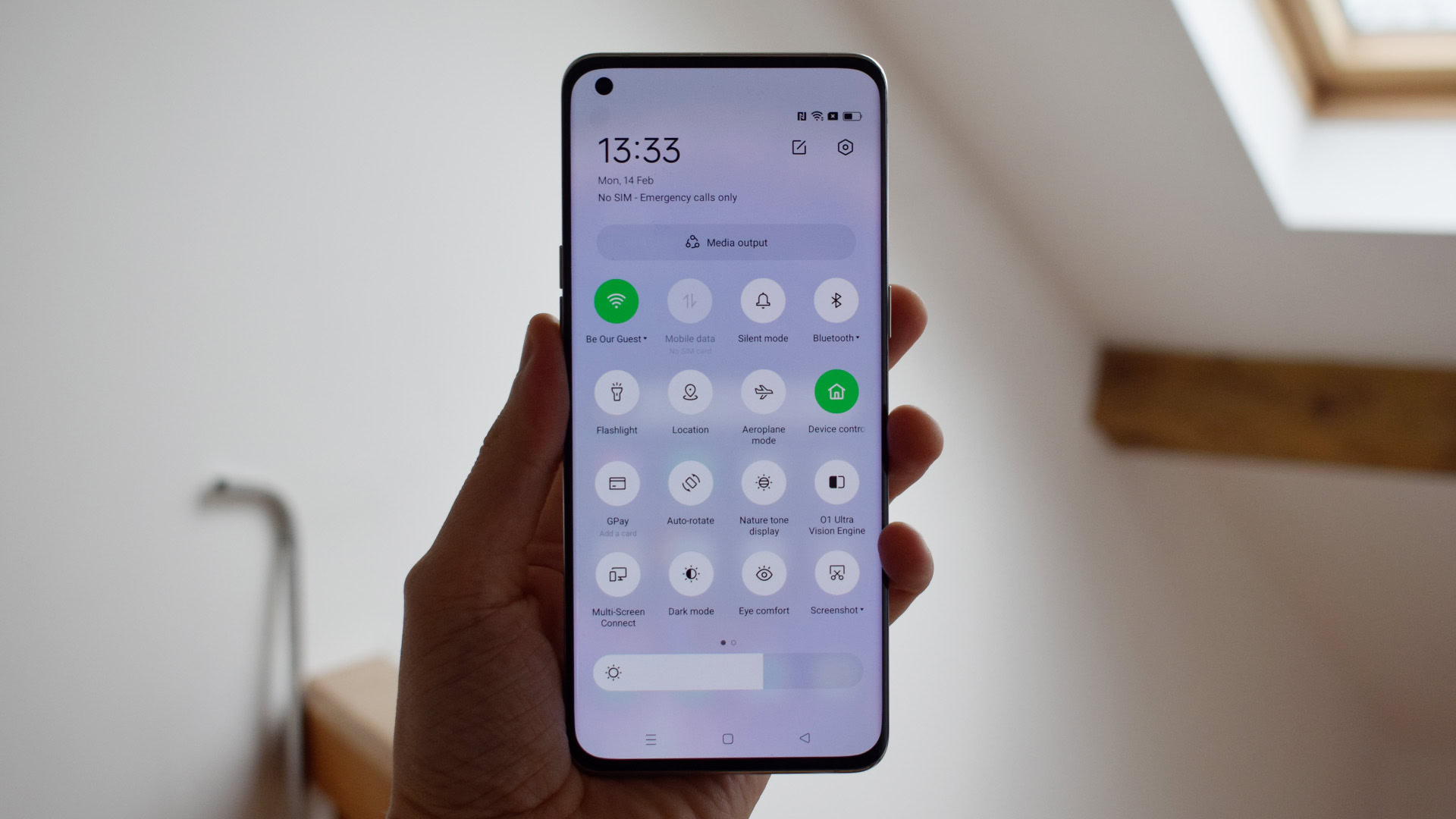
- 6.7-inch AMOLED LTPO
- 3,216 x 1,440
- 525 PPI
- 20.1:9 aspect ratio, 120Hz refresh rate
OPPO nailed a top-tier display experience with the Find X3 Pro and has carried that same excellence over to the Find X5 Pro. Headline specifications include a 6.7-inch WQHD+ resolution panel backed by 120Hz LTPO AMOLED technology, a 1,000Hz peak touch sampling rate, and an eye-watering 1,300 nit peak brightness. However, the phone certainly doesn’t get that bright for general viewing; instead, that’s reserved for highlights during HDR content playback. After you flick the setting’s toggle on, that is (make sure you do that!).
The phone’s software is also set to FHD+ resolution out of the box. This decision saves battery life at a small cost to image sharpness, though you’ll struggle to notice on a display of this size. Even so, the display looks immediately fantastic, and there are plenty of options to tweak should you want to experiment with P3 and wider color gamuts or adjust the white balance. But I don’t think there’s any need to here.
The Find X5 Pro flawlessly flips between dynamic refresh rates to save on battery.
One of the Find X5 Pro’s more interesting display features is the LTPO panel’s variable refresh rate. OPPO states the display automatically adjusts between 1Hz and 120Hz for optimal smoothness and power consumption. I haven’t seen the display fall below 10Hz, but that’s still a healthy power saving over constantly running at 120Hz.
We’ve recently experienced some lousy variable refresh rate implementations in the past, which stutter as the frame rate changes while moving between apps. Foruntlatey that isn’t the case with the OPPO Find X5 Pro, despite how aggressive the phone is at lowering its refresh rate. Swapping down to 10Hz is instantaneous and happens virtually as soon as you’ve stopped scrolling, unlike other devices that switch based on the app or more extended periods of inactivity. If I weren’t using a frame counter, I wouldn’t tell that the phone was switching frame rates. Importantly, you’ll always see 120Hz smooth motion no matter what app you’re using, which makes the most of the excellent panel’s capabilities. The refresh rate only dips when the page goes static, or you watch lower frame-rate content.
All in all, this display is every bit a match for industry-leading displays you’ll find from Apple and Samsung. The panel looks great, and I’d say the variable refresh rate implementation is one of the best in the business.
Performance: Not quite all there
- Qualcomm Snapdragon 8 Gen 1
- Adreno
- 12GB RAM
- 256GB storage
Packing a Qualcomm Snapdragon 8 Gen 1 processor, we don’t have any complaints about the Find X5 Pro’s day-to-day performance. Combined with 12GB of RAM, multitasking and gaming are as smooth as butter on the Find X5 Pro. Gamers will likely see a major upgrade compared to last year’s model, as graphics performance has closed right in on the market leader, Apple.
Just like the Find X3 Pro, however, OPPO doesn’t maximize its latest chip’s potential out of the box, opting instead for slightly lower performance to help prolong battery life. Not that this interferes with the day-to-day performance of your apps; they’re plenty smooth and multitasking is a breeze on a phone with 12GB RAM. If you want maximum performance for gaming and the like, you’ll have to manually toggle OPPO’s performance mode on. This results in benchmark scores much more in line with what we’d expect from the Snapdragon 8 Gen 1. However, even here we’re seeing a slightly lower multi-core CPU score than expected.
To put these results into perspective, the out-of-the-box app performance isn’t any faster than the last-gen model. But that’s not a problem as such; year-old phones perform just fine after all, but it’s a little underwhelming when compared to other first-wave Snapdragon 8 Gen 1 phones and notably behind newer, more efficient, and more powerful 8 Plus Gen 1 and 8 Gen 2 flagships. Still, the performance mode is there for those who demand raw power without regard for power consumption.
The Find X5 Pro holds some speed in reserve until you flip the performance mode switch.
All is not lost for performance junkies, though. Gaming is where the big gains are, and even without performance mode on, the OPPO Find X5 Pro flies in this regard. I clocked solid frame rates across Call of Duty Mobile and the highly demanding Genshin Impact. OPPO notes a 30% graphics jump over the previous generation but 3DMark’s Wild Life benchmark suggests the gains could be even higher in certain situations. The company’s Game Optimizer tool also gives you control over performance levels while playing, as well as notifications, quick floating window access to common apps, and other useful tools. OPPO also touts a 1,000Hz “instantaneous” touch sample rate, and although everything feels extremely responsive, I didn’t notice anything game-changing.
Oppo’s Find X5 Pro is also up to date in the 5G department, at least where it counts. There are no mmWave capabilities here, so you won’t hit the insanely fast speeds touted by some networks. However, this is less of an issue for OPPO’s sub-6GHz-focused target markets which lie outside of the US. The Find X5 Pro has a couple of 5G tricks up its sleeve too, including dual-SIM and eSIM support, additional 5G bands for better roaming, and OPPO’s 360 degrees Smart Antenna System. The latter ensures a robust connection by picking the best two out of its four antennas.
Those looking for the best networking capabilities won’t find Wi-Fi 6E or 7 onboard here, just plain Wi-Fi 6 instead. It’s not a deal-breaker and might be a conscious decision owing to a lack of 6GHz licensing in some of OPPO’s primary markets. There’s no UWB support either, which you will find on the latest Galaxy and Pixel handsets. Again, this isn’t the worst omission, but it does mean that the Find X5 Pro isn’t ultra-future-proof in the wireless department compared to the competition.
Battery: All day in a flash
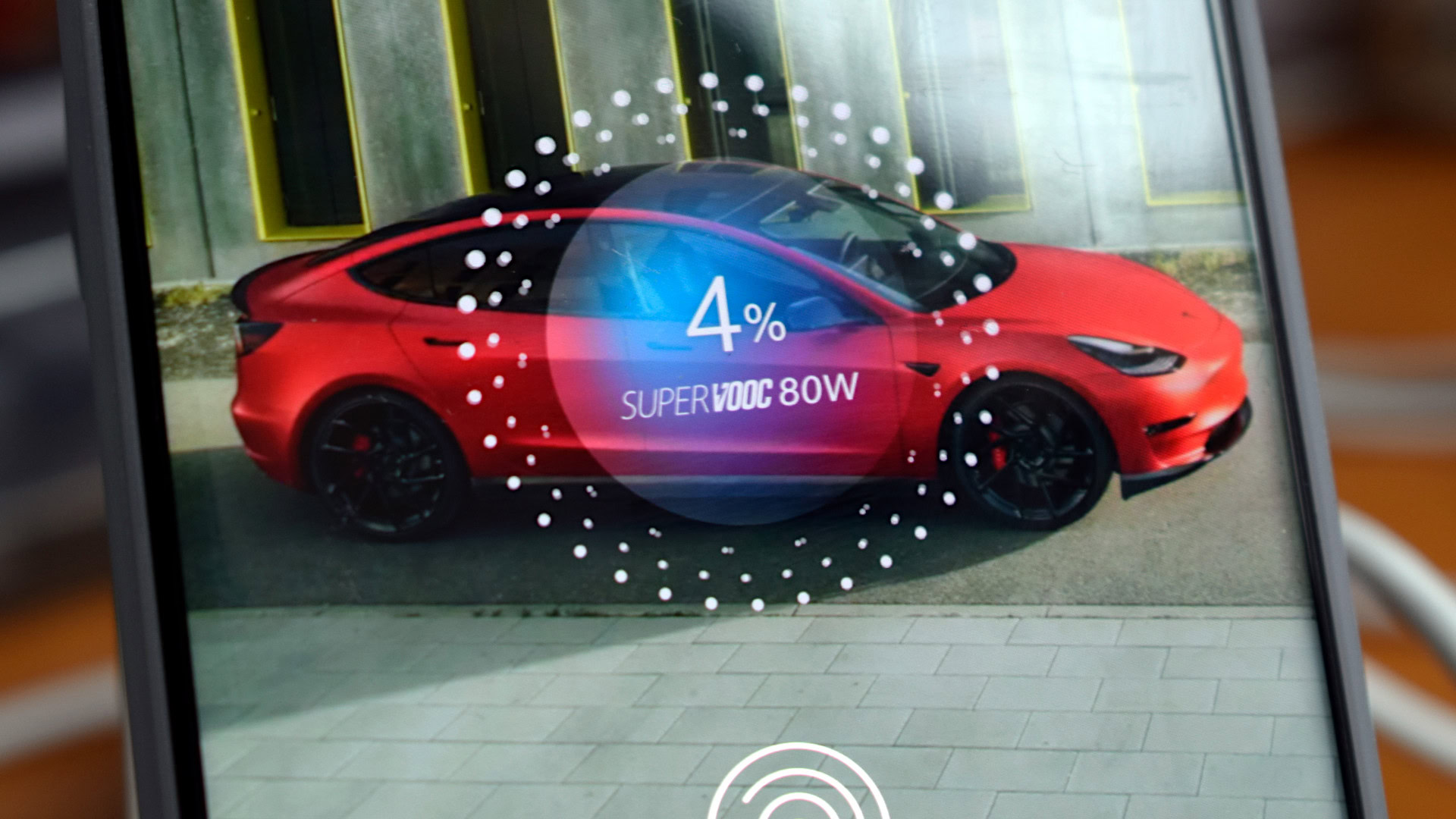
- 5,000mAh
- 80W SuperVOOC wired charging
- 50W AirVOOC wireless charging
- 10W reverse wireless charging
All of OPPO’s display and performance optimizations pay dividends when it comes to battery life. The Find X5 Pro will easily last power users through a full day of screen-on-time thanks to its 5,000mAh dual-cell battery. Those with lighter or mostly social-oriented workloads will likely make it well into a second day before feeling the need to reach for a charger.
You’re looking at six to eight hours of reasonably heavy use here, which is marginally better than last year’s model and among the better flagship performers we’ve seen, at least in the Android space. I also extrapolated over 10 hours of video streaming playback, which is great for a long-haul trip. However, do be aware that exclusive heavy use of video recording and high-end gaming will drain the battery a fair bit faster. Even so, the most demanding users will be satisfied with the battery life on offer from the Find X5 Pro. If you require even longer screen-on time, there’s always the option to switch the display to 60Hz, enable power saving mode, and turn off various other features.
Charging-wise, OPPO’s proprietary SuperVOOC charger has been tuned up to 80W of power this time around, taking you from empty to 100% in about 32 minutes on average. However, it took an average of 39 minutes to finish topping up the battery in our testing. The phone hits 25% in five minutes and 50% battery in just 11-12 minutes. Despite the higher power rating, that’s not really any faster than the 31 minutes it took to fill up the last-gen OPPO Find X3 Pro. Of course, the new model has a larger battery to charge, but it’s also worth noting that the 80W charger only hit 66W peak in our testing and is sustained for less than a minute.
The Find X5 Pro will easily last power users through a full day and lighter use will push to two.
But more important than raw speeds, the Find X5 Pro debuts OPPO’s Battery Health Engine technology. Designed to ensure fast charging doesn’t degrade long-term battery capacity too quickly, OPPO now rates the battery good for 1,600 full-cycle charges. That’s double the 800-cycle lifespan of its previous products. It’s a positive sign that OPPO is investing in battery health tech to counterbalance its ever-rising charging speeds.
OPPO has fixed a significant issue from our review last year, too. The OPPO Find X5 Pro charges correctly with USB Power Delivery plugs, albeit at a slower 18W. This is vastly improved from the sub-10W charging we saw last year and ensures that the handset will charge quickly-ish with battery packs and third-party charging accessories.
The Find X50 Pro also supports 50W wireless charging using a compatible AirVOOC dock. We haven’t tested this option, but OPPO states that it tops up the Find X5 Pro to full in 47 minutes. When using a more universal Qi wireless charger, the handset received up to 15W of power. The phone can also reverse wireless charge at 10W — double the usual 5W power you’ll find on most phones — to quickly power up your wireless earbuds and other small accessories.
Camera: Beyond the branding
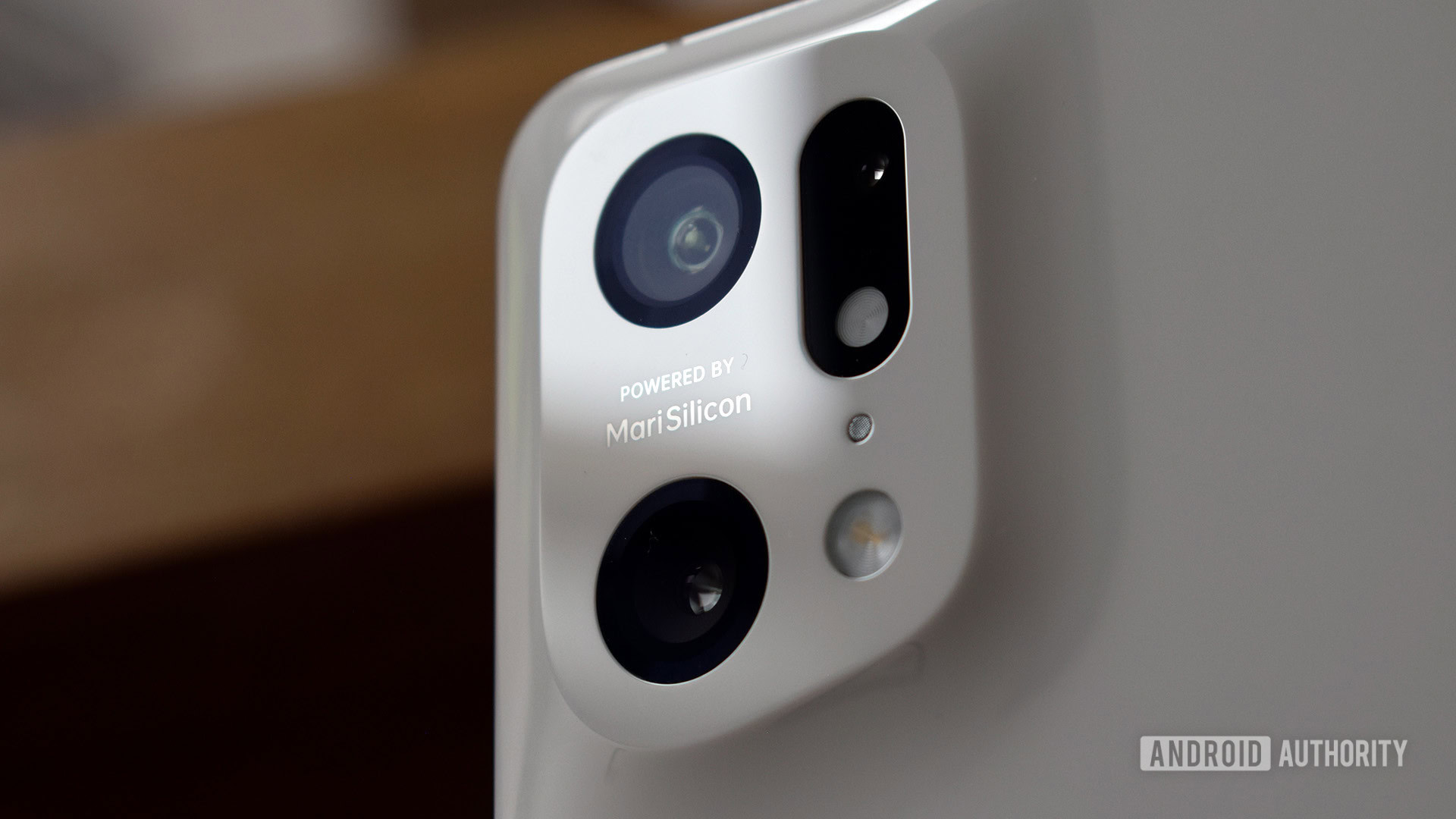
- 50MP, 5-axis OIS (f/1.7, 1.0μm, 1/1.56-inch, 25mm, 80-degree FoV)
- 50MP ultrawide (f/2.2, 1.0μm, 1/1.56-inch, 15mm, 110-degree FoV)
- 13MP telephoto (f/2.4, 1.0μm, 1/3.4-inch, 52mm, 2x optical zoom)
- 32MP front camera, (f/2.4, 0.8μm, 1/2.74-inch, 21mm, 90-degree FoV, RGBW)
- 4K video up to 60fps
The contentious OPPO/OnePlus merger opened the door for OPPO to share in the Hasselblad camera partnership. OPPO signed a three-year partnership with the legendary camera brand, which sees Haddelblad tweaking the Find X5 Pro’s camera color processing for added artistic flair. That’s not the only key camera change this year; OPPO is also debuted its Marisilicon X custom image signal processor in a bid to jump ahead of the best camera smartphones.
In a nutshell, Marisilicon X is built to run OPPO’s AI imaging algorithms right on the RAW data coming from the camera, improving noise reduction, low light for photos and 4K videos, and RGBW sensor processing, which comes into play for the Find X5 Pro’s selfie camera. The Find X5 Pro also sensibly drops the gimmicky 60x super macro “microlens” found on its predecessor. Combined with twin 50MP Sony IMX766 sensors and an improved 13-channel spectral color sensor, OPPO is talking up a big camera game this year.
Before taking a gander at the shots below, OPPO notes that the software our Find X5 Pro was running is not quite the commercial build. Specifically, a further update will refine the camera experience, particularly where stabilization is concerned. You can check out the full-res image samples in this Google Drive folder.
The OPPO Find X5 Pro is a solid shooter at a casual glance. Exposure and white balance are particularly pleasant in outdoor lighting. Details are also decent, if not a little heavily processed in places. The use of large image sensors across the wide and ultrawide lenses provides consistent exposure and noise across these two cameras, whether you’re shooting a standard or macro shot. The 2x zoom camera, used for the first snap above, also performs admirably in daylight, although its details certainly aren’t as clean as the larger sensors.
However, as good as many of the OPPO Find X5 Pro’s daylight images look, the camera has a major issue with color oversaturation and oversharpening. That Hasselblad partnership certainly isn’t aiming for accuracy.
The Find X5 Pro camera certainly doesn't aim for color realism.
The hay bale shows this aggressive level of oversaturation quite clearly, across the browns, blues, and greens of the scene. While some might like the added pop, I’d rather dial it in post than be stuck with it. The second and third samples above show a troubling side-effect of dialing up the colors — clipping. The brickwork and flower petals end up offering flat smears of color as all the detail has been clipped out of the file. The last sample above showcases an oversharpening issue that you’ll find across a few samples with more complex textures. The sheer strength of the halos indicates a very high level of sharpening post-processing. It’s not a great look.
Read more: The best phone cameras of 2022 tested
Oppo’s color processing and heavy contrast have a knock-on effect for the camera’s HDR capabilities. While still very powerful, the comparison with the Pixel 6 Pro above highlights the lack of subtle colors and shades from OPPO’s phone. You’ll spot much more detail and mid-greys in the foreground tree, clouds, and back of the barn in the Pixel’s picture, while the Find X5 Pro loses this subtle detail due to its stretched contrast.
When it comes to night photography, the Find X5 Pro’s camera setup sees a major improvement over the Find X3 Pro, seemingly thanks to the Marisilcion X processor. Exposure-wise, the multi-frame capture and low-noise processing capabilities of OPPO’s custom silicon work wonders, making out colors and fine details whether you’re in limited indoor lighting or shooting at dusk. Quality low-light snaps are achievable using the main, ultrawide, or even the zoom camera, the latter being a particular rarity. You don’t have to use the phone’s night mode, although the phone automatically switches to a longer exposure time in darker conditions.
This was the case in the very low lux second shot below, where you’ll spot plenty of detail on the black camera, which is still well balanced against the white of the phone. Similarly, the stary sky scene was captured in just three seconds compared to nearly 10 on the Pixel 6 Pro. The Find X5 Pro can indeed shoot virtually in the dark.
However, you can probably spot that the white balance isn’t quite right in the first snap. The handset also struggles to focus in very low light, which isn’t unusual. The phone would benefit from a laser AF system to ensure you can make the most of the phone’s low-light capabilities. Likewise, the long exposure time for night shots can result in some blurring if you don’t have the steadiest hands. Although the phone’s five-axis stabilization technology helps somewhat.
Marisilicon X equips the Find X5 Pro for powerful low light photography.
If you’re interested in a comparison, I snapped the same very low lux scene on the Google Pixel 6 Pro and HUAWEI P50 Pro. Without night mode, the Pixel 6 shows how dark the scene was. The Find X5 Pro’s color balance isn’t quite as good as the Pixel’s Night Sight mode, but it’s otherwise a very good match. HUAWEI is still the one to catch here, though. The phone produces an equivalent result with a virtually instantaneous capture. So the Find X5 Pro sits somewhere between the two — it’s a solid low-light shooter.
Moving on, let’s look at the camera zoom. With a 2x optical zoom lens and small sensor, we’re certainly not expecting superior long-range results, and indeed that’s the case. The zoom performs well in daylight at 3x and can extend to 5x without too many blemishes. But don’t chance your arm with a 10x snap or beyond; the Find X5 Pro can’t go toe to toe with the likes of Samsung for distance. The telephoto lens’ wide aperture does help ensure a bright exposure even when zooming in at longer ranges, which helps the snapper punch above its weight. However, close inspection of the finer details reveals a rather heavy sharpening pass like the main camera, so the results aren’t the cleanest.
There’s reasonably consistent color grading when switching between the three lenses and we’re still looking at heavily saturated colors all around. However, in the shots above you probably spotted that the sky is more purple in the ultrawide snap while the green saturation is dialed up even further when switching to the 2x telephoto. Once again, the Find X5 Pro’s color processing doesn’t quite get it right.
Speaking of the ultrawide lens, it offers a significant 0.6x step back from the main lens, with the focal length switching to 15mm from 25mm respectively. Close inspection of the ultrawide shot above reveals a small amount of chromatic aberration, but it’s certainly not a major issue. OPPO’s improved lenses and correction algorithm appear to be very good, ensuring minimal signs of warping at the edges of your shots. Details are also reasonably well presented, but you will spot those telltale sharpening halos around hard edges, such as the tree branches.
The OPPO Find X5 Pro’s bag of photography tricks extends to the front camera. Powered by a 32MP RGBW sensor, it’s one of the more unique solutions on the market. The inclusion of a white pixel into the bayer filter is designed to improve light capture, which certainly works in practice. The low light sample below is well exposed without too much noise, thanks to the combination of the RGBW sensor and dual RGB+W processing pipeline in OPPO’s Marisilicon X. RGBW sacrifices some color detail though and, combined with a small-ish sensor, our low light snap is a little washed out and too soft. But it still performs better than most.
Outdoor and indoor selfies look great, if again not a little too colorful, particularly when it comes to skin tones. OPPO offers a bewildering range of face, skin, and background tweaks with its selfie suite, but these are thankfully toned down by default. The selfie and rear camera also work with OPPO’s portrait mode with very pleasing results. The Find X5 Pro’s bokeh blur looks subtly soft but can be dialed in further. The phone’s edge detection algorithm is also up there with the best in the business. It doesn’t struggle too much with fine hairs but can still be tripped up with background objects placed right behind you. Overall though, the selfie and portrait camera experience is decidedly top-notch.
With regards to video, the Find X5 Pro’s excellent low-light capabilities fully carry over. You’ll have no trouble capturing decent exposure, colors, and detail, even at 4K in low light. The results aren’t quite as clean as the stills but they are still very good. Strangely, the camera defaults to the ultrawide lens for video capture, and you annoyingly can’t swap between lenses while shooting. Although you can shoot dual-view front and back video using the main and telephoto cameras. There’s also no 8K video mode, but even if it were available, we’d still recommend you shoot in 4K until the technology actually catches up.
OPPO's selfie and portrait camera experience is decidedly top-notch.
OPPO also bundles its ultra-steady pro stabilization technology to even out the most violent screen shakes. Although it works well, it does produce a few stretching artifacts, and there’s really little use for it when shooting with the main lens, given it already offers five-axis hardware stabilization. Sadly, you can’t use ultra-steady pro with the zoom camera, which is where it would be most beneficial. The camera also supports 1080p software video bokeh blur from the main and telephoto lenses. Object detection and tracking work well, but you’ll easily spot edge artifacts on moving subjects, so this mode is only so helpful. Still, there’s plenty to dive into here if you like video and, overall, the capture experience is well above average.
See the screenshots below if you’re interested in a tour of the familiar-looking Camera app UI. It hasn’t changed much since the Find X3 Pro, and there are still plenty of advanced photo and cinematography modes for those that want to go a little deeper with ISO, aperture, etc, than standard point-and-shoot mobile photography.
Software: The best Color OS yet
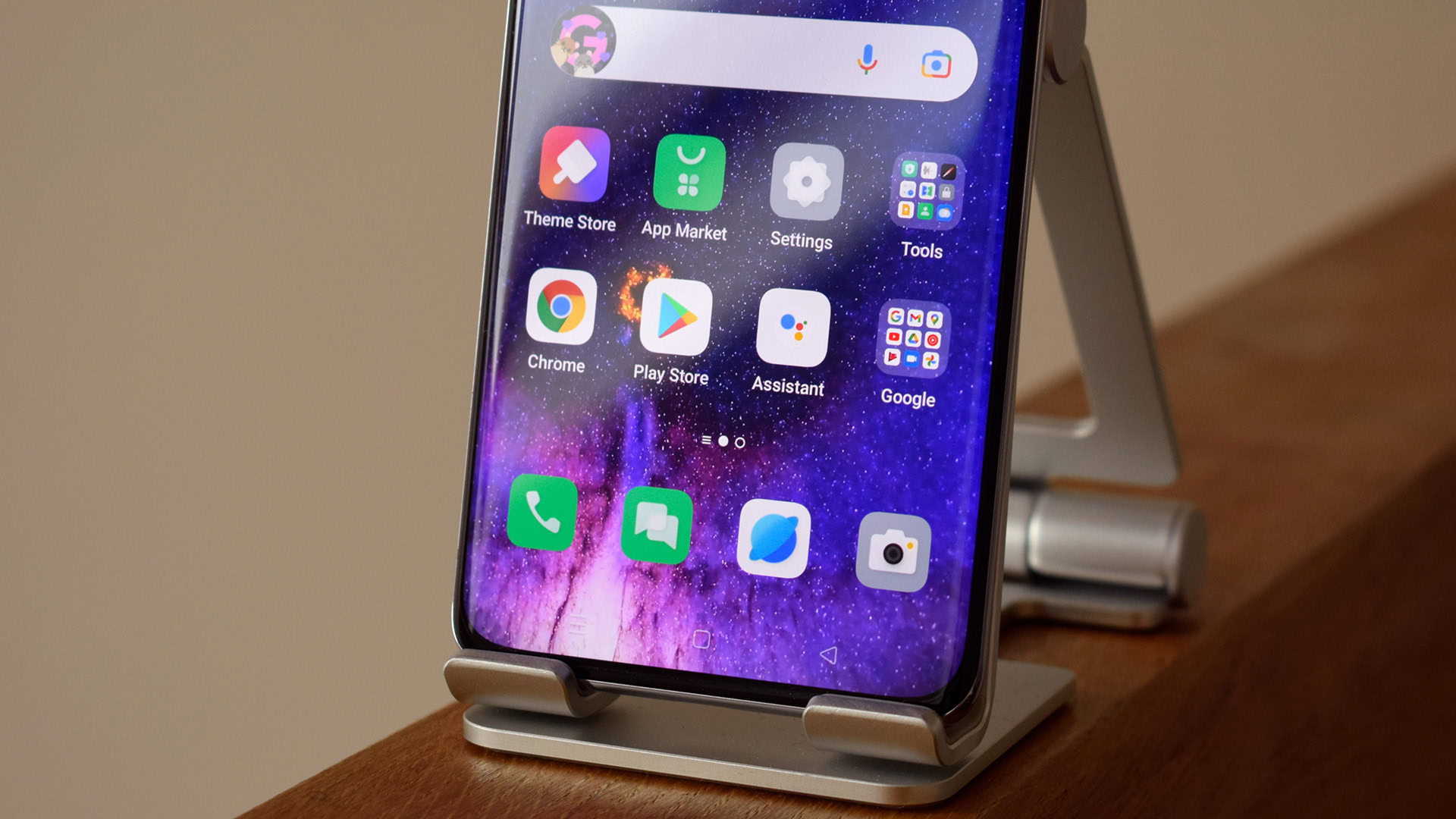
- Android 12
- ColorOS 12.1 (upgradable to ColorOS 13)
- Three years OS updates, four years security patches
ColorOS has come along leaps and bounds in recent years, and OPPO was so close to nailing it with Color OS 12, which is based on Android 12. It’s pretty, for a start, as well as fast and fluid, and the look was only enhanced with the ColorOS 13 update to a revamped “Aquamorphic Design.”
Theming is consistent across the UI, various menus, and OPPO’s apps, which shows great attention to detail. A word of warning, though — Color OS 12 and the ColorOS 13 update are dangerously deep. It’s not bloated as such, and settings keep well out of the way if you don’t want them, but there’s a Mariana Trench’s worth of options, toggles, and tweaks to explore if you’re so inclined. Even after using ColorOS 12 and 13 on and off for months, I don’t think I’ve come close to exploring all the possibilities, let alone working out quite what my ideal setup is.
First up is theming. ColorOS implements Android 12’s dynamic theming, automatically pulling colors from your wallpaper and applying them across system toggles, notifications, and the like. You can also pick your own if you prefer. OPPO goes much further though, offering full control over icons, quick setting icon styles, fonts, fingerprint sensor animations, edge lighting colors, a huge range of always-on display settings, as well as a powerful theme import engine. If you love to make your phone your own, ColorOS has the tools to do it.
OPPO’s Find X5 Pro is rich with options to improve your multitasking capabilities too. The combination of the Smart Sidebar and Flexible Windows adds a nice dynamic to popping in and out of your most regular apps with ease. Flexible Windows can pop up in addition to Android’s standard split-screen feature, but it feels like overkill even for the more ambitious multitaskers. Likewise, OPPO’s Quick Launch feature lets you quickly swipe into apps when unlocking your phone from the fingerprint scanner. That said, I’m not sure the long press required to active Quick Launch quite lives up to the feature’s name.
The Find X5 Pro lets you customize your lock screen shortcuts, change the swipe and knock features, raise to wake, various haptic doodads, and a whole host of other toggles. Honestly, it’s easy to overdo it and have two or three extras turned on that you probably don’t need or even end up wanting. Still, it’s great to have these power user options available.
ColorOS looks and runs great out the box and you can tweak virtually everything, but can we cool it on the pre-installed bloat and app stores, please?
Sadly, ColorOS isn’t flawless. In fact, I have a couple of major gripes with it. Let’s start with this: stop recommending me apps from your proprietary App Market. Pre-installed bloat is already bad enough and remains so with the Find X5 Pro. The last thing I want is my home screen cluttered with “Hot Apps” and “Hot Games” app folders I have no interest in, from an app store I (and no doubt many others) don’t want to make an account for. You might expect and tolerate this from a budget phone, but not one in this price tier.
Thankfully, you can toggle the folders off, but there was an an unholy amount of pre-installed apps installed on our handset. For example, there’s the Hey Fun game store, Game Center which also offers game downloads, and an OPPO Store app pre-installed. While you can uninstall some of the pre-installed apps, a number of them, including the App Market and Game Center, can only be disabled. We’ve asked OPPO if we can expect these services pre-installed on all launch devices or whether they will be region-specific, but we haven’t received a response. We can confirm that the apps are still there months later despite moving to retail software, at least on our unit.
It’s a curious state of affairs. On the one hand, the Find X5 Pro pushes its own stores and features like Omoji (really?) and O-Relax (relaxing sounds are nice, I guess). On the other, it embraces Google Photos for the default gallery, Google Discover Feed, and Google’s power-off menu, complete with Google Pay front and center. ColorOS is at its best when it finds a happy middle ground, expanding on Android’s features without reinventing the wheel unnecessarily. While there are lingering issues and too much pre-installed bloat, OPPO hits the mark more often than it misses with the Find X5 Pro — Color OS 12 and 13 are (mostly) really good.
OPPO promises three years of OS updates and four years of monthly security patches for the Find X5 Pro. That’s not the best in the business (that title belongs to Samsung), but is pretty much average for flagship-tier smartphones coming out of China. The phone will remain secure until at least 2026, which isn’t too bad. OPPO has since improved its commitment to four OS and five years of security, but that only applies to newer flagships; the Find N2 Flip and Find X6 Pro
OPPO Find X5 Pro specs
| OPPO Find X5 Pro | |
|---|---|
Power | 5,000mAh battery 80W wired charging 50W wireless charging |
Connectivity | 5G (sub-6GHz) Wi-Fi 6 (ax), Dual Band Bluetooth 5.2 NFC support |
Display | 6.7-inch AMOLED LTPO Curved display 20.1:9 aspect ratio WQHD+ resolution (3,216 x 1,440) 120Hz adaptive refresh rate (1Hz to 120Hz) |
RAM | 12GB |
Dimensions and weight | 163.7 x 73.9 x 8.5mm 218g |
Storage | 256GB No microSD card support |
Software | Android 12 ColorOS 12.1 |
Materials | Ceramic back Corning Gorilla Glass Victus front |
Colors | Ceramic White Glaze Black |
Durability | IP68 certified |
Video | REAR: - 4K at 60fps FRONT: - 1080p at 30fps |
Cameras | REAR: - 50MP wide (1.0μm, ƒ1.7, 25mm, 80-degree FoV) - 50MP ultrawide (1.0μm, ƒ2.2, 15mm, 110-degree FoV) - 13MP telephoto (1.0μm, ƒ2.4, 52mm, 2x optical zoom) FRONT: - 32MP wide (ƒ2.4, 21mm, 90-degree FoV) |
Processor | Snapdragon 8 Gen 1 |
Audio | Stereo speakers Dolby Atmos support |
Security | Under-display fingerprint sensor |
Value and competition
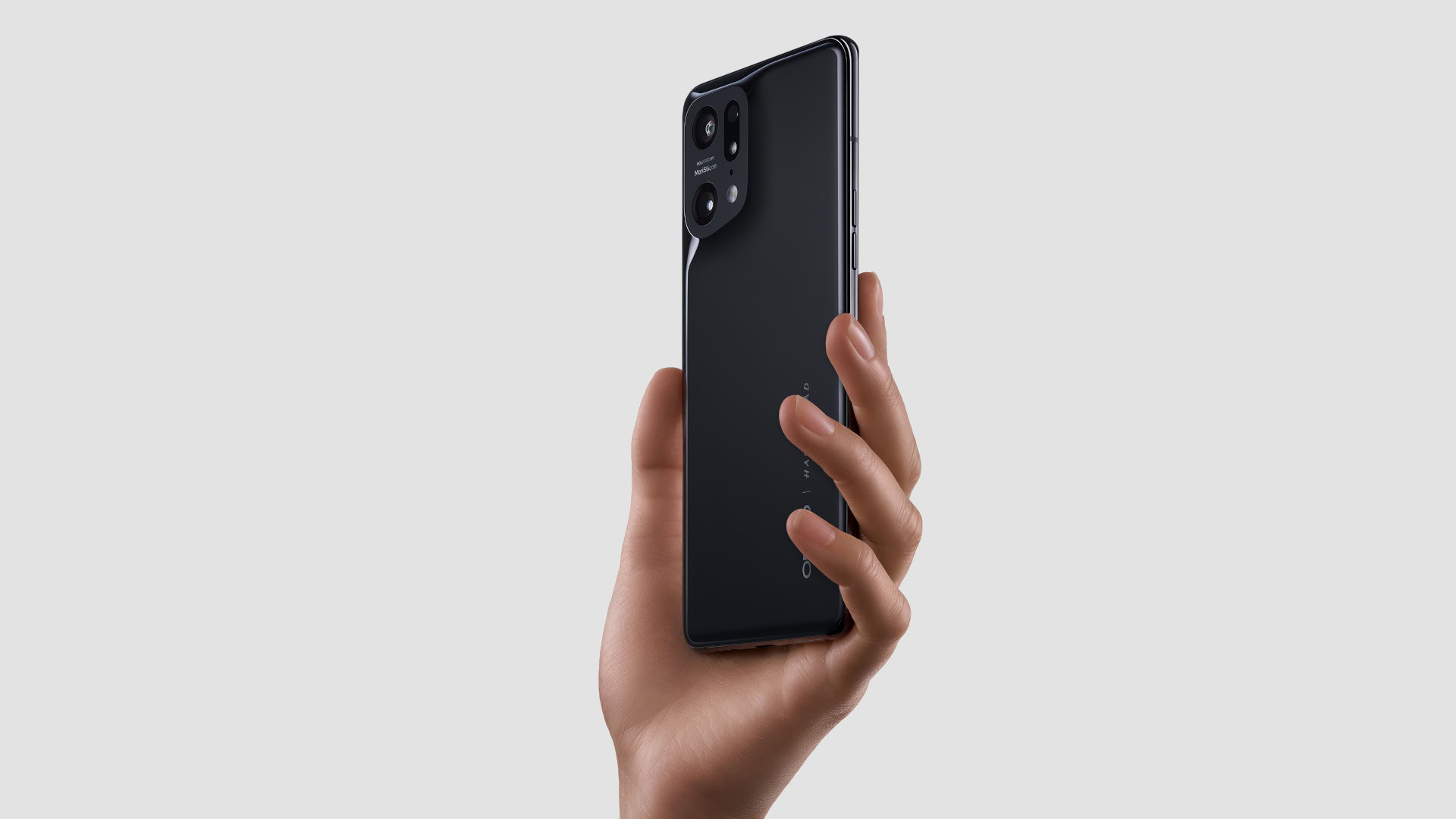
There’s a lot to love with OPPO’s Find X5 Pro. Between the excellent display, super-fast charging, all-day battery, and wonderful design, OPPO has far surpassed the fundamentals and is very much at the top of the technological pack. ColorOS is also a mostly polished piece of kit, especially following the ColorOS 13 upgrade. It’s every bit as good to use as OPPO’s hardware; you’ll just need to eradicate some bloatware before you can really enjoy it.
Launched at £1,049 in the UK (£50 less than its predecessor), the phone nestled between Samsung’s latest Plus and Ultra models. That felt spot-on back in 2022, but it is a harder ask now that the Samsung Galaxy S23 series and OPPO Find X6 Pro are out, even if you can’t buy the latter outside China. Thankfully, the newer China-only model has prompted discounts down to just €799/€950. That’s solid value, particularly in the UK.
Still, the newer Samsung Galaxy S23 Ultra ($1199.99 at Samsung) offers 10x optical zoom capabilities and a faster processor that the Find X5 Pro can’t match. Samsung’s new S23 and older S22 series also have the best software support guarantee of any Android phone, with four years of OS and five years of security updates, but that’s perhaps not such a concern if you can snag OPPO’s handset at a big discount. If the Ultra is too pricey, the updated Galaxy S23 Plus ($999.99 at Samsung) is also worth a look as a Find X5 Pro competitor.
The Find X5 Pro is still a great phone when picked up at a discounted price.
The Sony Xperia 5 IV ($998 at Amazon) can also be found in the same price bracket. It commands a flexible camera setup, wonderful build quality, and gaming and multimedia-oriented features. Charging aside, it’s a good match for the Find X5 Pro’s design, imaging, and gaming focuses, even though its processor is now a generation behind.
But the real competitor at X5 Pro’s discounted price point is the Google Pixel 7 Pro ($589.98 at Amazon). Google’s flagship certainly doesn’t have an answer to OPPO’s fancy charging technology, but it’s still a great-looking phone with an outstanding camera setup. Plus, Google offers a slightly longer five years’ worth of security updates too. I’d also suggest checking out the iPhone 14 series, specifically the iPhone 14 Pro ($799.99 at Amazon). It’s a beast of a phone backed by Apple’s enviable ecosystem, though its unadventurous design can’t hold a candle to the Find X5 Pro’s bold looks.
At its original MRSP, the Find X5 Pro would be a really tough sell today. But if the heavy discounts stick around, it’s still a solid flagship to pick up in 2023.
OPPO Find X5 Pro review: The verdict
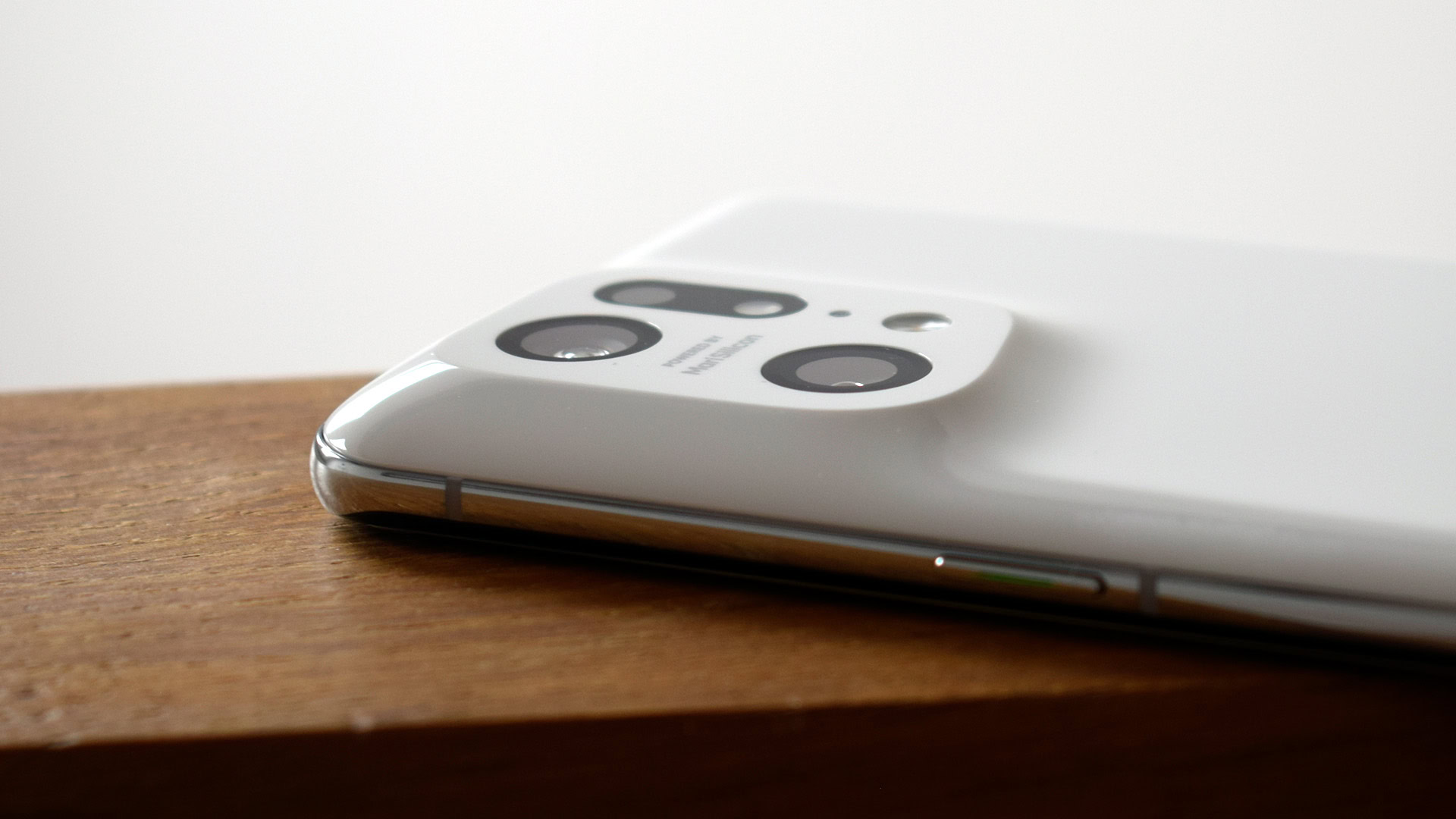
The OPPO Find X5 Pro is undoubtedly the company’s most comprehensive global smartphone to date. However, it’s a case of cumulative small improvements rather than anything revolutionary compared to 2021’s Find X3 Pro. Performance is still in the same ballpark unless you’re a serious gamer, the futuristic design is ironically very similar, charging support is improved but not really any faster, and ColorOS is a little further refined. Even so, this certainly doesn’t detract from the fact that the OPPO Find X5 Pro is an excellent phone.
OPPO has clearly focused its most meaningful changes in the camera department, particularly with its custom Marisilicon X chip and Hasselblad partnership. OPPO is taking photography more seriously, removing gimmicks like the microlens, but the results are still hit-and-miss. The phone lives up to its marketing with low-light photography and videography capabilities, but these gains are thrown away by the frankly ridiculous color saturation applied to its pictures. That said, some may like the look, and the handset offers excellent selfie and portrait capabilities too, which many users will love. The camera takes nice-looking snaps for social media. However, the setup is unlikely to win over the most serious photography enthusiasts, especially when you factor in the limited optical zoom compared to its periscope-toting alternatives.
OPPO's Find X5 Pro successfully combines cutting edge custom hardware with a beautiful bespoke design.
Even so, it’s not too hard to reconcile the phone’s target market with its newly discounted price tag — in the UK especially. If you can pick it up cheap, it’s still a great handset that still stacks up well against the best from Apple, Google, and Samsung.
We still recommend the Find X5 Pro to anyone who digs a unique design and loves to customize the look and feel of their mobile experience. There’s personality here that you don’t get elsewhere. Spend a few minutes tuning the software to your tastes, and ColorOS is a lovely piece of software to use in isolation. Combined with ultra-fast charging, battery longevity, and a smattering of other improvements, there’s a wonderfully imperfect phone here for those who can get on board with OPPO’s futuristic vision.